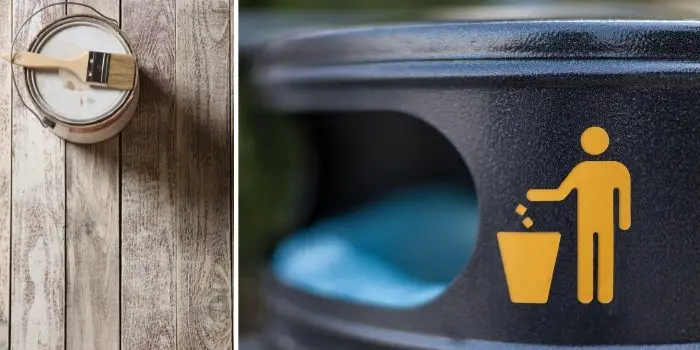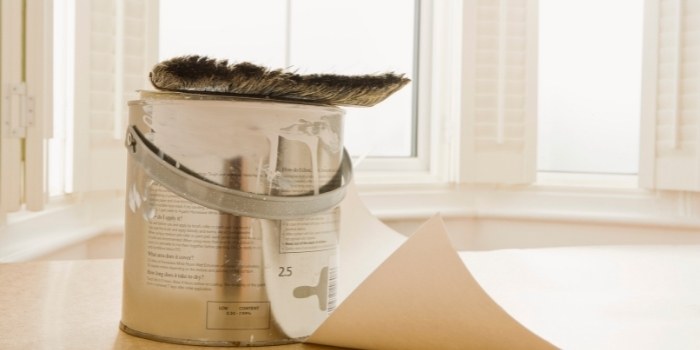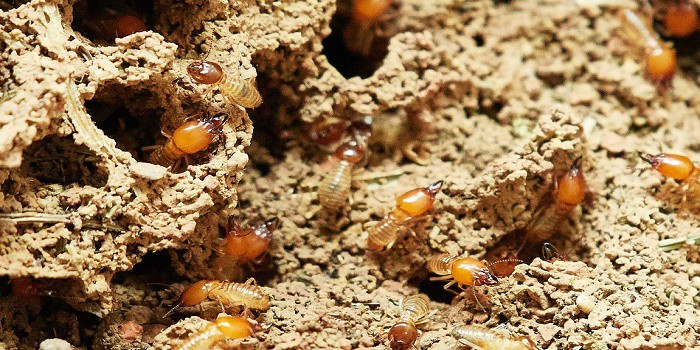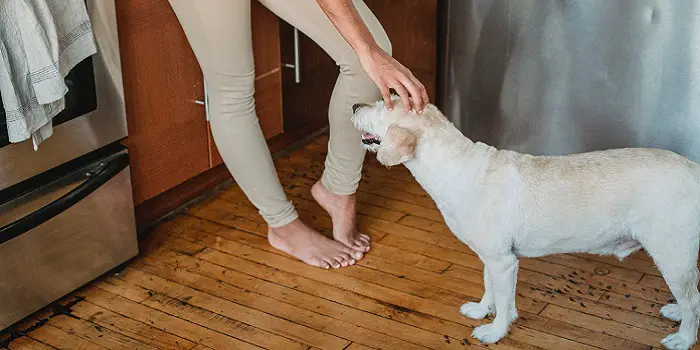
Polyurethane varnish is a strong coating that is commonly used as a finish to protect wood stairs, floors, and other wood surfaces that can be damaged by high foot traffic.
The product can also be used to protect plywood, hardboard, chipboard, and other similar surfaces.
As useful as it is, it can quickly become a pain when it comes time to dispose of it.
Polyurethane varnish can be either oil- or water-based, but both types go bad with enough time. And once the varnish has gone bad, you have to dispose of it.
Because it has the potential to harm the environment, you have to dispose of it safely.
Fortunately, there are different methods you can choose from when it comes to disposing of the material.
These methods of varnish disposal require drying it out. When the varnish is wet, it poses a risk to the environment. There are two ways you can speed up the process of drying:
Method 1. Use Cat Litter to Dispose of Polyurethane Varnish
Cat little is hygroscopic, meaning that it can absorb polyurethane varnish and cause it to clump together for easy cleanup.
Step 1- Wear the right clothing for the job
This is to prevent the varnish from touching your skin and ruining your good clothing.
You should also consider wearing a pair of latex gloves to let you safely and easily handle the varnish.
If you want to avoid the possibility of getting varnish in your eyes, you could also wear safety goggles.
Step 2- Combine the polyurethane varnish with the litter
To do this, use a disposable can that is bigger than the can of varnish. A large, empty juice can work for this step.
This is important: you don’t want to have to transfer this mixture to a larger container if you realize the container is too small, because it can make quite a mess during the process.
Put equal amounts of varnish and cat litter in the can. Add more litter until it looks dry enough to be safe.
Step 3- Let it absorb
Once you have poured the two materials together, you simply let the mixture sit for a while.
It takes a bit of time for the litter to absorb the varnish, so you’ll need to let it sit for at least an hour.
If you want, you can use a sturdy stick or an old, large, kitchen spoon to stir the mixture. Mixing it will help the materials mix into one another more swiftly.
You do not need to do this step; it is your choice. Be sure to leave the lid off of the can, as the air exposure will also speed up the drying process.
Step 4- Check 1 hour later
Check the can to see if all of the varnishes have been absorbed by the litter.
You can do this by using the stick or spoon to move it around to see if there is any liquid varnish that has not been soaked up by the litter.
If you see that the varnish has not yet dried (not totally absorbed), you can add more litter.
Stir it up once more to make sure it is well mixed and then allow it to sit for 15 minutes. Inspect it again, and repeat the process as necessary.
Step 5- Put the mixture in the garbage
Once it has completely dried, you can throw the mixture away. At this point, the polyurethane varnish won’t be a risk to the environment.
Method 2. Use Newspaper to Dispose of Polyurethane Varnish
You are also free to dry up polyurethane varnish using newspaper.
This is a good option if there are a lot of varnishes to dispose of, and it is even less expensive than the cat litter option.
Even so, it can be more time-consuming than the cat litter method because newspapers won’t absorb the varnish as quickly as litter.
To the varnish remaining in the original container, slowly add newspaper in small pieces if you want to avoid the possibility of overflowing the can.
Trying to stuff a whole sheet of newspaper into the container can cause it to overflow if you are not careful.
Be sure to move the newspaper around to make sure it is touching the varnish.
Once it is touching enough of it, you’ll need to let it sit for around an hour and then look to see if the can is dried out.
If it isn’t, you’ll need to add more newspaper to the can until it is dry.
Once this is done, you can toss it all in the trash can, or ask a representative at the waste management facility what to do with it.

Method 3. Let the Polyurethane Varnish Dry Up by Itself
If you aren’t worried about how long the process takes, you could simply allow the poly to dry out on its own.
To do this, you’ll just need to leave the lid open and let the air work its magic.
This process can take quite some time to work. To speed it up a little, you could place it somewhere in the sun.
If you choose this route, you should not leave the can just anywhere. Because it is toxic, it should be placed somewhere that pets and kids can’t get to.
If you work with any of the methods mentioned above, you will need to be sure that all of the rags and the can are totally dry before you get rid of them.
Regardless of the method that you choose, you have to be especially careful with oil-based polyurethane varnish.
This is because it is quite flammable and may catch on fire while inside the garbage.
But when it’s dry, you can safely get rid of the rags, can, and other materials safely.
Other than the above, commercial hardeners are a swift and simple way to dry it out, but it is quite expensive. This is a good option only if you don’t have a lot of time to work with it.
Method 4. Dispose of the Polyurethane with Waste Management
For this, you’ll need to get in touch with a waste management department in your city to let them know that you intend to discard some polyurethane varnish.
Ask them if there are any laws at the state or city level regarding the process.
Whatever the guidelines may be, it’s important that you follow them. If you don’t follow the guidelines, you may end up having to pay fines, which could include attorney fees.
To be on the safe side, look at the label on the varnish container. The label will have a list of ingredients that you can use to determine the way to safely dispose of it.
Once you have confirmed with ingredients, talk to the representative at the waste management location and schedule an appointment for them to either come to pick up the material or for you to take it to them.
Be sure that you place the varnish in the right kind of container as directed to make sure it doesn’t make a mess.
It also needs to go into the right disposal bin at the facility. If it isn’t handled properly, it could pose a risk to sanitation workers or even damage to the sorting material.
Method 5. Think About Recycling the Polyurethane Varnish
You are also free to recycle polyurethane varnish if you so choose.
Before doing so, you can talk to your local recycling center and make an appointment to drop it off there. Instead, the recycling company should be able to take care of all of that for you.
This is probably the best option if you have a lot of leftover polyurethane varnish.
This will also save you plenty of time having to go through the process of drying out the varnish.
Final Thoughts
Polyurethane varnish is a toxic material that is not safe to simply dump out in the yard when you’re done with it.
If you do, you are posing a risk not just to the plants and animals in the area but also to the environment. Instead, poly requires extra care to dispose of it safely to ensure no one is left at risk.
There are several different ways for you to dispose of polyurethane varnish, all of which include first drying it out.
You can do this by mixing it with cat litter or soaking it up with newspaper. You could also let it dry on its own, though the process takes a lot longer.
All in all, proper polyurethane varnish disposal is crucial. Above, we’ve outlined a few ways for you to go about this process.

Hi, I am Mark Garner a professional carpenter, woodworker, and DIY painter. I live in the small city of Peoria, Arizona as a semi-retired woodworker. I have started this blog with a simple motive to help you with my wood experience in this sector. If you like to know more about what I love doing and how it all got started, you can check more about me here.





